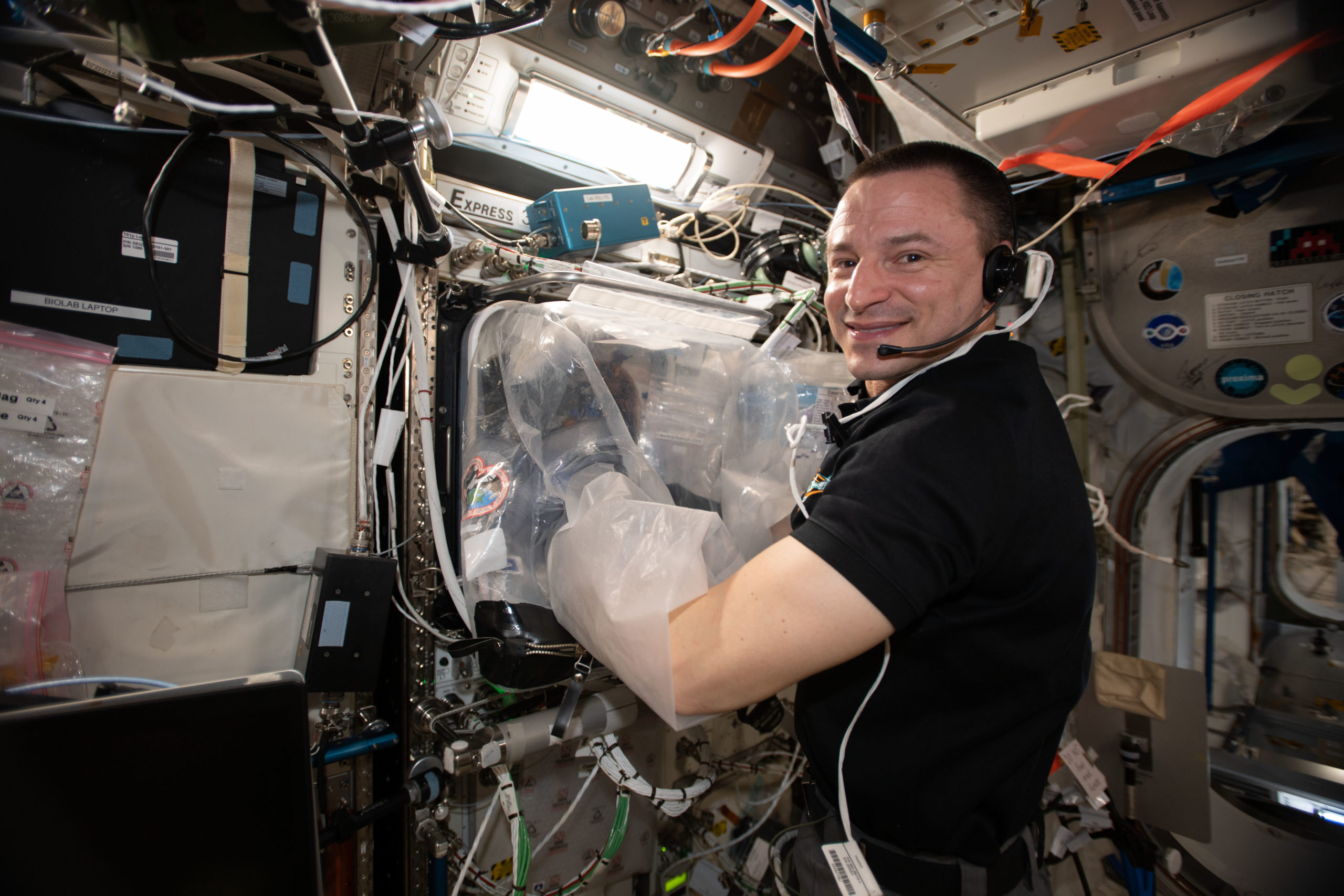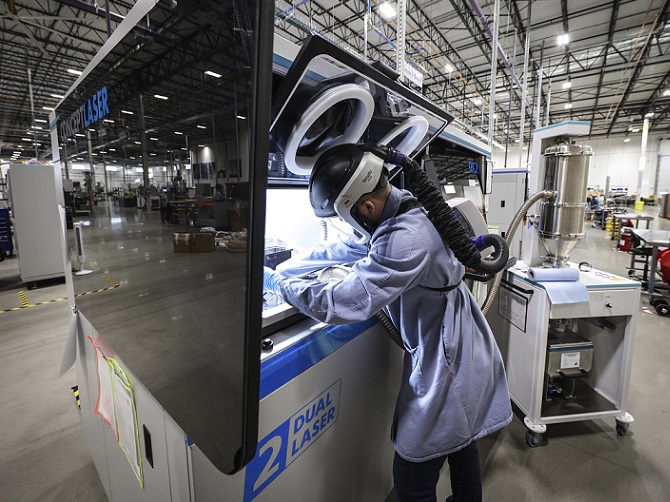3D Printing Off-Earth: ISS National Lab Hosts AM in Space Workshop
Off-Earth manufacturing is beginning to shed some light on how humans could live in orbit. The development of in-situ resource capabilities, like in-space manufacturing, for sustaining life and mobility in space, has been on NASA’s space technology grand challenges list for years. Experts across industry, academia, and government are attempting to create radical systems using disruptive technologies with the potential to transform critical space missions. However, current capabilities are still not enough to withstand frequent or long-duration space travel. But all hope is not lost. Additive manufacturing (AM) is slated to be the key to solve in-space manufacturing limitations.
Since the 1990s, the International Space Station (ISS) has served as a microgravity and space environment research lab where experts have gained critical knowledge that could help future survival capabilities, particularly with space agencies planning to deploy missions to the Moon and Mars in the next decade. NASA and its international and commercial partners are in a great position to lay out a plan for human space exploration, but before any of that happens, they need to create the manufacturing facilities and materials that will speed up space exploration.

NASA astronaut Andrew Morgan services the Bio-Fabrication Facility (BFF) 3D bioprinter.(Image courtesy of the ISS National Lab)
To better understand current trends, research, and challenges of AM and microgravity R&D, the Center for the Advancement of Science in Space (CASIS), manager of the ISS U.S. National Laboratory, organized the 2020 virtual Additive Manufacturing in Space Workshop. Hosted in July 2020, the event featured briefings and breakout sessions focusing on microgravity-specific materials and processes; in-situ resource utilization (ISRU), and in-space production.
Etop Esen, Commercial Innovation Lead in the CASIS/ISS National Lab’s Strategy and Business Development, explained that the Lab is working with companies on groundbreaking science, technology, and innovation using the microgravity environment on the ISS to address real-world challenges and try to fill the gaps and advance the development of AM for full-scale industrial manufacture. Esen described how in space, “when gravity is no longer a dominant variable” and we don’t have “normal processes of sedimentation or other phenomena,” material interphases become more dominant.
On the materials side, Jennifer Edmunson of the Jacobs Space Exploration Group, supporting NASA’s Marshall Space Flight Center (MSFC), pointed out that it is still unclear to what extent any of the materials and rocks that are found on Earth and on other planetary bodies can be economically converted and used as 3D printing feedstocks. And suggested that part of the solution could come from AM studies of recycled waste materials onboard the ISS, followed by exposure to the low-Earth orbit (LEO) environment outside the station to test the durability of the 3D printed materials.
ISRU is necessary to change the paradigm orbital replacement unit and the stockpiling of repair parts so that next-generation operable habitats rely on repairable, replaceable, or serviceable systems, said Edmunson. She also highlighted that the spare mass currently on orbit weighs 12,170 kg while only 450 kg of parts are failing each year, so there are “a lot of spare parts sitting around collecting dust,” and “ISRU is the only economical way to enable a sustainable human presence off-Earth.”
“If we had a sustainable habitat on the moon, we could take the materials, chemically separate them into their constituent elements and then recombine them to make cement for walls, or vitamins and oxygen for crew members. But we are not exactly ready to go, we don’t really know how much of these elements are present since remote observation is superficial,” revealed Edmunson. “There are a lot of steps from taking a resource on the ground and making the transition to printable feedstock. We have to ask ourselves whether these processes even exist on Earth today, are they economically scalable and how many of these processes depend on gravity.”
For ISRU on other planetary bodies planning to use regolith-type materials (superficial deposits covering solid rock), material conversion processes used on Earth should be tested to determine whether they are suitable for reduced-gravity operations or whether new technologies and materials are required, explained Edmunson. Different AM feedstock “recipes,” formulated based on combinations of the materials found in the lunar regolith, may be studied using ISS AM facilities. Glass and glass-ceramics produced from lunar regolith were suggested for focused studies in this area and NASA’s MSFC has already printed subscale structures using a 3D printed paste, including Martian simulated regolith.

ISRU system concept for autonomous robotic excavation and processing of Mars soil. (Image courtesy of NASA)
On the commercial side, Amber Andreaco, Principal Engineer for Materials Behavior at GE Additive, said a current limitation encountered with powder bed fusion (PBF) AM for “large-format” metal structures, such as rocket nozzles, is a necessity to print in sections and then “stitch,” or join, the printed parts. While research opportunities to explore for the ISS include studying how the joining process affects finished material properties such as fatigue capability in microgravity and performing LEO exposure studies with PBF material samples.
Andreaco said that PBF systems pose some challenges in space, including the size of the machine and the post-processing heat treatments to achieve some of the material properties. GE Additive is actively working on large format additive for multiple space applications. Andreaco described that “it has been a challenge for the industry to come together and agree on standards from an adoption perspective,” and that understanding requirements, both regulatory and design, is the first step towards qualification.
Pioneering space companies Tethers Unlimited representative Rob Hoyt and Made In Space’s Justin Kugler discussed several installed or planned ISS facilities for in-space manufacturing. Among these were the Tethers Refabricator, a combined plastics recycler and 3D printer designed to demonstrate a closed-loop manufacturing and plastics recycling process on the ISS; Tethers “FabLab,” which incorporates a metal 3D printer for in-situ manufacturing of precision parts in space; and the Made In Space Additive Manufacturing Facility, the first commercial platform for AM to be installed on the ISS.
Hoyt, Tethers’ CEO, described space manufacturing as a “keystone” that can tie in the different markets in space to enable a functional economy. Tethers has been focused on how to take space trash or debris and reprocess it to make resources and feedstock for in-space manufacturing. One of the design challenges for the company is to make the systems highly self-contained and automated to minimize the amount of astronaut time needed to operate them.
Additionally, we learned that the next SpaceX flight will carry Made In Space’s first ceramics manufacturing facility to the ISS. It will use the stereolithography of pre-ceramic resins to generate highly uniformed ceramic parts with a low number of defects when compared with terrestrial counterparts. For Kugler, the combination of additive with rapid manufacturing processes, like stereolithography and metal beamforming, will rapidly generate high-quality parts and materials in space.
“This combination of processes is the toolkit we will need to have when we go to the Moon and Mars,” revealed Kugler, who is Vice President for Advanced Programs and Concepts for Made In Space. “For industrial production in LEO, we have to get to batch processes, to be able to generate enough products on a time scale that are relevant to the industry. I think the combination of factors and availability to do batch processing will give scalability to the industry.”
During the breakout sessions, experts delved into microgravity and how it enables new options such as the use of soft materials (like elastomers, foams, and rubbers), low-viscosity inks, and new polymer options (including longer cure-time thermosets, filled polymer systems, continuous fiber reinforcement, and semi-crystalline polymers). As well as how accurate measurement of thermophysical properties and wetting behavior, enabled by microgravity studies, are essential for AM processes both in space and on Earth and should be a priority focus of research on the ISS.
Additionally, Kugler and Allison Beese, Associate Professor of Materials Science and Engineering at Penn State University, suggested that understanding the requirements, material properties, and design options specific to space applications is important for products made and used in space, especially for large, exposed structures. Updated design tools will aid in leveraging the variety of non-uniform shapes and structures possible through space-based AM.
Creative approaches between NASA and other organizations and companies already conducting AM or related activities in orbit could result in innovative and essential solutions for human space exploration, creating the foundations that will enable the technology and materials that will make in-space manufacturing an industrialized and scalable process.
Subscribe to Our Email Newsletter
Stay up-to-date on all the latest news from the 3D printing industry and receive information and offers from third party vendors.
Print Services
You May Also Like
Low-cost “Suzy” Polymer Powder 3D Printer is Faster and Cheaper than Past Models
Polish laser powder bed fusion (LPBF) firm Sinterit has released a follow-up to its predecessors, Lisa and Nils, called Suzy, a $19,490 printer equipped with a 30W fiber diode laser....
India’s $58M Space Fund Is a Boon for AM Innovation
India’s space industry is picking up serious momentum. With a projected $44 billion space economy by 2033, the country is aggressively expanding its capabilities, fostering private-sector participation, and reducing its...
Japanese Advanced Manufacturing Capabilities Grow in Europe with Sodick’s Purchase of Prima Additive
The global economy is currently undergoing a reshuffling in terms of what gets manufactured where. In large part, this trend is being driven by new geopolitical alliances and the need...
Bosch Invests €6M into Serial Auto Part 3D Printing
German industrial conglomerate Robert Bosch GmbH, the world’s largest supplier of automotive parts, has announced a new investment into Nuremberg, Germany additive manufacturing (AM) facility. The nearly €6 million in...






























